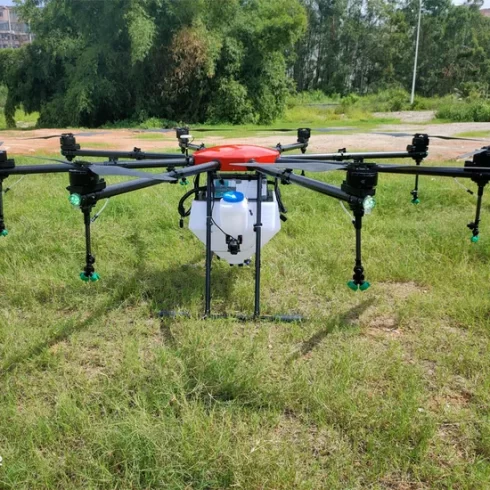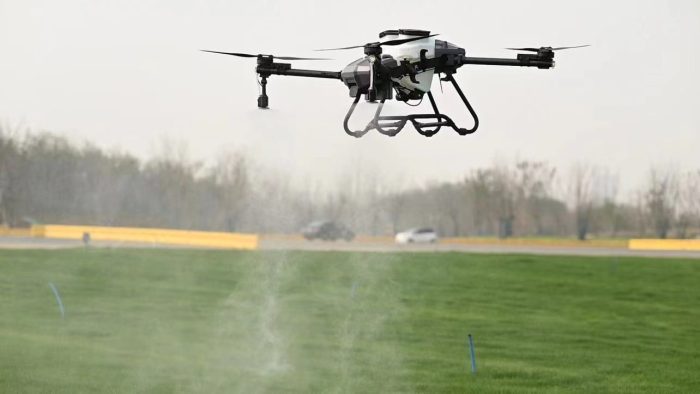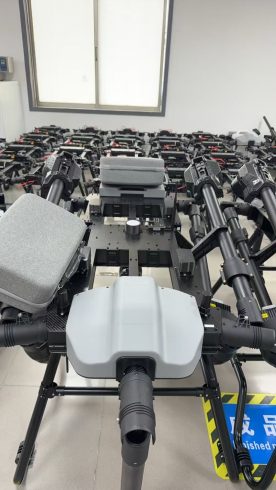![图片[1]-Harnessing the Power of Agricultural Spraying Drones for Next‑Generation Crop Protection-msoen](https://www.msoen.com/wp-content/uploads/2025/02/0f1391077c98-1-1024x769.jpg)
As global food demand accelerates and environmental regulations become stricter, farmers are under pressure to maximize yields while minimizing chemical use. Agricultural spraying drones—also known as UAV sprayers—offer a transformative solution. By combining precision flight control with intelligent spray systems, these drones empower growers to apply pesticides, herbicides, and fertilizers faster, safer, and more sustainably than ever before.
The Rise of UAV Sprayers in Modern Farming
Traditional ground‑based sprayers and manual backpack methods face challenges such as uneven coverage, operator fatigue, and difficulty in reaching remote or waterlogged fields. In contrast, agricultural spraying drones:
- Navigate Difficult Terrain
Lightweight multicopter platforms can hover over flooded rice paddies, steep vineyards, and muddy orchards without risking machinery bog‑downs. - Reduce Human Exposure
Remote operation keeps pilots far from potentially harmful chemicals and hot sun, enhancing workplace safety. - Speed Up Applications
A single drone can cover 10–25 acres per hour—often five times faster than ground rigs under comparable conditions.
Core Features That Drive Efficiency
Modern UAV sprayers integrate several key technologies:
- Precision Flight Control
GPS‑guided autopilot ensures centimeter‑level accuracy. Pre‑programmed waypoints allow repeatable flight paths and edge‑to‑edge coverage with minimal overlap. - Adaptive Nozzle Systems
Variable‑rate nozzles adjust droplet size (20–400 μm) and flow rates in real time, responding to field maps or on‑board sensors. This adaptability cuts chemical usage by up to 40%. - High‑Capacity Tanks & Quick‑Swap Batteries
Payloads range from 15 L for compact models up to 50 L for large hexacopters. Hot‑swap battery packs keep drones in the air longer, supporting continuous operations. - Obstacle Detection & Safety Protocols
Integrated ultrasonic or LiDAR sensors prevent collisions with trees, power lines, and buildings. Geo‑fencing tools block unauthorized flight beyond farm boundaries. - User‑Friendly Mission Planning
Mobile apps let operators draw treatment zones on satellite maps, configure spray parameters, and monitor live telemetry—no programming skills required.
Tangible Benefits for Growers
- Optimized Chemical Usage
Accurate application zones eliminate over‑spray and drift, lowering costs and environmental impact. Many growers report a 30–50% reduction in agrochemical volume. - Labor and Time Savings
One pilot can oversee multiple drones simultaneously, freeing farmhands for planting or harvest tasks. Rapid setup and teardown streamline daily workflows. - Enhanced Crop Health
Uniform coverage and targeted spot‑spraying prevent pest hotspots and nutrient deficiencies, leading to healthier plants and more consistent yields. - Real‑Time Data Collection
Some UAV sprayers integrate multispectral or RGB cameras, enabling post‑flight analysis of crop vigor, water stress, and disease onset—informing future spray strategies.
Selecting the Right Sprayer for Your Operation
When choosing an agricultural spraying drone, consider:
- Field Size & Layout
- Small plots (<20 acres): Compact quadcopters with 15–20 L tanks
- Medium farms (20–100 acres): Hexacopters offering 25–35 L payloads
- Large estates (>100 acres): Octocopters or multi‑drone fleets with centralized mission control
- Crop Type & Canopy Structure
- Low‑growing cereals and vegetables: Wide‑angle spray nozzles at low altitude
- Tall orchards and vineyards: Boom‑style or high‑angle atomization systems
- Regulatory Compliance
Check local UAV flight restrictions, licensing requirements, and pesticide application standards. Opt for units with built‑in data logging for audit trails. - Support & Training
Ensure the supplier offers pilot certification, maintenance workshops, and rapid‑response technical support to minimize downtime.
The Road Ahead: Integrating Drones into Smart Farms
Agricultural spraying drones are rapidly becoming core components of precision‑agriculture ecosystems. When paired with IoT soil sensors, weather stations, and AI‑driven analytics, UAV sprayers provide a closed‑loop system that continuously refines crop‑protection strategies. As technology advances, we can expect:
- Autonomous Swarm Operations: Multiple drones coordinating in real time to cover vast areas.
- Edge‑Based AI: Onboard processing for instant crop‑health diagnostics and dynamic spray adjustments.
- Seamless Farm‑Management Integration: Unified dashboards that blend spraying, planting, and harvest data for 360° operational insights.
Conclusion
Agricultural spraying drones represent a paradigm shift in crop protection—offering unmatched speed, precision, and environmental stewardship. By selecting the right UAV sprayer, investing in proper training, and integrating with broader smart‑farm technologies, growers can achieve higher yields, lower input costs, and a more sustainable future for agriculture.










暂无评论内容